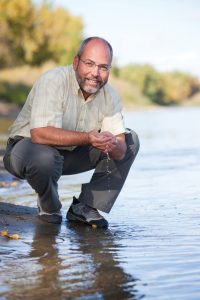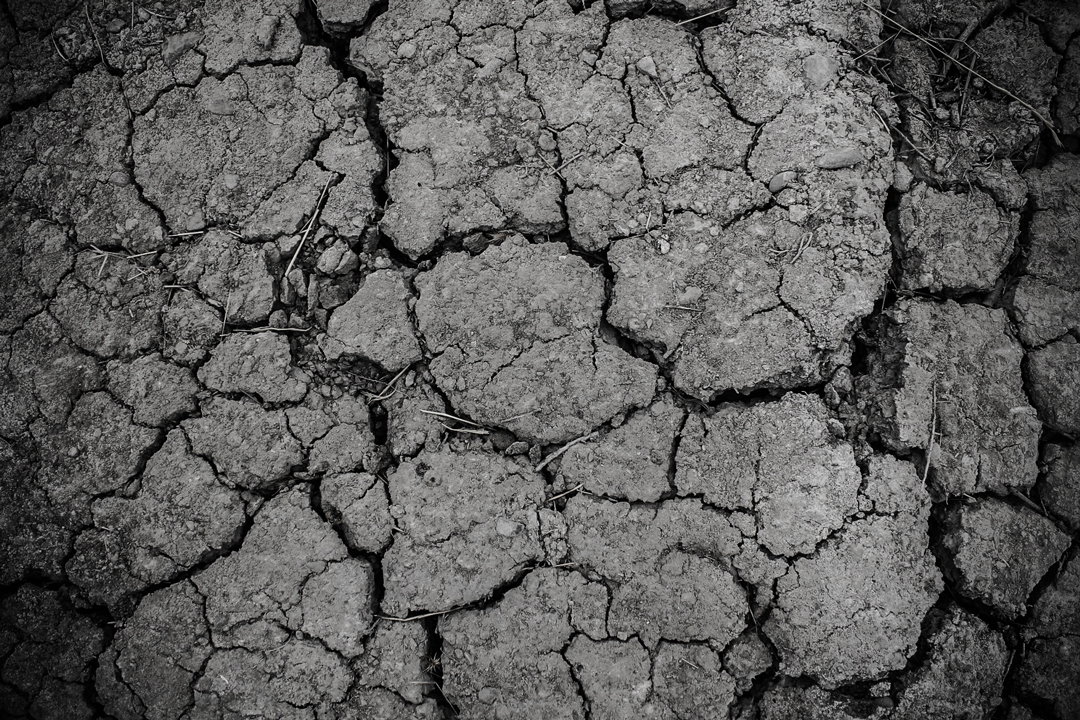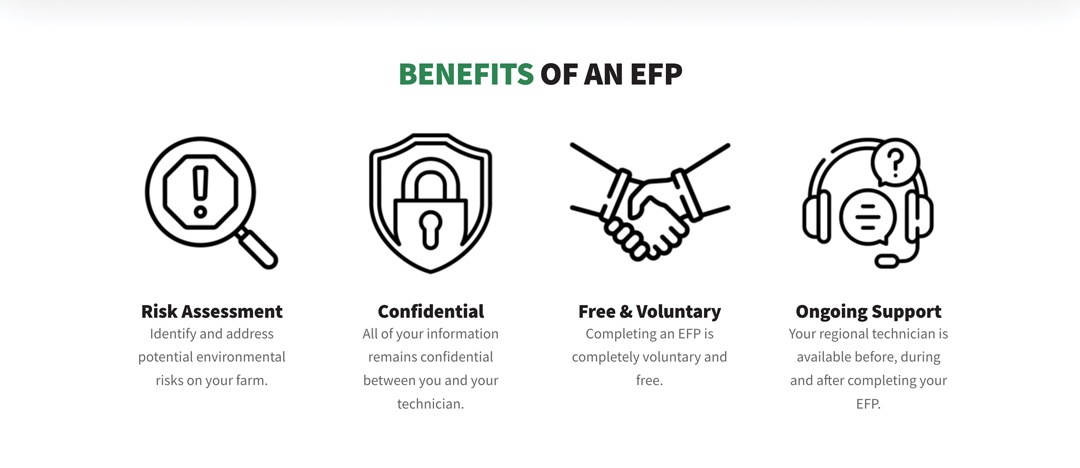UNCHARTED WATERS
BY TREVOR BACQUE • LEAD PHOTO BY PIXABAY
When drought hit western Canadian farms in 2021, it reinforced the truth that water is our most precious resource. The tremendous negative impact of this weather event begged the question: what if it happens again?
The mid-2010s were relatively moist, but experts are now concerned about precipitation levels through the ’20s and beyond. Many predict fluctuation between periods of moisture and dryness, but that the Prairies will experience drier, hotter conditions on average. To put a finer point on the above question, what solutions can be devised to curb the resulting predicted water scarcity?
To better envision the Prairie climate of the future, it’s important to understand its past. Stefan Kienzle, has done yeoman’s work to track and plot every single weather data point recorded between 1950 and 2017 across Alberta’s geography in 10-kilometre square chunks. A University of Lethbridge professor in the Department of Geography and Environment, he has created albertaclimaterecords.com, a highly useful interactive historical map. And what that documented history shows is clear.
“The number of heatwaves has doubled to quadrupled in Alberta since the 1950s,” he said. “Most surprisingly, the cold spells have also doubled and quadrupled during the same period. That is a clear indication that the wild weather swings are much more extreme today than, say, 50, 60 years ago.”
Kienzle pointed out a trend older farmers will have experienced firsthand, and that is the extension of Alberta’s growing season of between two to five weeks since the 1950s.
Overall, the increased heat, regardless of precipitation levels, will impact agricultural production. “With temperatures over 30 C, crops stop growing or go into a dormant phase, and cattle are stressed just as we humans are,” said Kienzle. He added stressed animals produce less meat and milk and become more susceptible to disease.
Kienzle noted dryland farmers don’t have a hope, while irrigated producers are left with a fighting chance if a period of dryness and heat persists. Even if you have access to irrigation, it’s not a get out of jail free card. The spinoff effects of continued drought are simply devastating, he said.
“The first year, irrigated farmers still get their good yields, depending. If we have a second-year drought and reservoirs didn’t fill enough, maybe they have to reduce how much water is supplied and the second year may not get enough water to get yields. Add a third year of drought and the entire system collapses,” he said. “If the reservoirs don’t get refilled, that’s the end of it.”
He pointed out the last three years skewed toward overall drought conditions rather than excess moisture and hay issues for cattle across the Prairies put pressure on ranchers. “Where do you get your hay from? There is no hay. That means culling of cattle [herds], which take years to rebuild. A multi-year drought is the biggest threat to food production.”
Kienzle’s additional research has focused on three of southern Alberta’s most critical watersheds: the Oldman, St. Mary and Waterton. Together, and with contributions from northern watersheds such as the Bow and North Saskatchewan, they provide the major water supply for the three Prairie Provinces.
Through his hydrological modelling, he wanted to simply determine whether or not Alberta’s reservoirs will hold adequate water supply in the coming years. He determined two key things.
“The good news is average inflow into these reservoirs will hardly change,” he said, but noted the biggest issue and unknown is to what extent increased temperatures may affect evaporation. The root cause of increased evaporation, which is elevated levels of atmospheric C02, will remain in place long-term. Even if no more greenhouse gases are emitted, CO2 remains in the atmosphere for roughly a century. Keinzle suggested greenhouse gas reduction efforts should shift focus from C02 and to methane emissions. It remains in the atmosphere just 20 to 30 years but produces a stronger greenhouse effect on a per molecule basis.
And yes, Kienzle is aware flooding occurs, and can be extremely damaging, but it’s nothing compared to drought. “That’s dangerous because drought is a larger threat to society than floods are,” he said. “This [past] year was a wakeup call for what’s about to come.”
He does not necessarily think every year will see a heat dome, but that they will continue to occur and this should no longer surprise anyone. While various parts of the Prairies will fair well in the short- to medium-term, such as the west side of Highway 2 between Red Deer and Edmonton, he said the southern Prairies are in dire straits. “Unfortunately, this trend will just keep going and keep accelerating,” he said.
Nonetheless, there are solutions for farmers, and Kienzle believes precision agriculture is one of the biggest tools now available to farmers. He sees opportunities through greater uptake in variable rate everything—from water and fertilizer to pesticides and seed. He also envisions solar farms being installed on marginal lands. “You produce energy that you can sell on the market … that will be a good economical system, farmers can double dip on their land.” Further positives Kienzle sees include the continued conversion of open-air irrigation canals to fully enclosed and buried pipelines.
Kienzle and others alike know farmers do all they can to be sustainable, yet some things are just beyond their control. This doesn’t deter John Pomeroy from believing in a bright future, despite the heightened uncertainty around precipitation. “We’ve had more warming than the rest of the world,” he said. “[We’ve] already had over 2 C of warming since the late 1950s, early 1960s; going to end of century, we can see another five or six degrees depending on how greenhouse gases are managed.”
He points out that it’s hard to find trends in the yearly volume of precipitation on the Prairies over time, but does note the most severe floods and droughts have all occurred within the last 20 years.
“[It’s] a bit of an indicator that the variability of our precipitation is going up [with a] greater shift away from snowfall to rainfall,” he said. “Mid-winter and March rainfall has just gone through the roof over the last 50 years in the Prairies. I think most people would be able to notice this, especially the longer growing season.”

Farmers must manage their water by managing their snow, primarily through stubble, he explained. Many farmers prefer shorter varieties of just about every crop, yet the stubble they produce is less effective in trapping snow. Farmers can’t have it both ways. “It’s important to remember that in the central Prairies, we might get 350 millimetres of precipitation in an average year and 100 millimetres of that is snowfall. If we don’t hold the snowfall in the field, that’s only 250 millimetres to grow the crops; it’s not enough.”
Wetlands are also a key environmental structure farmers can invest in and take the time to manage well. As evaporation occurs, if the wetland is healthy enough, it can cause the formation of clouds, which can contribute to rain, ideally upon the farmland where it’s situated. “That can be part of breaking the drought,” he said.
As some farmers already know and experience, increased temperatures bring new crop opportunities, specifically corn and soybean. “There will almost certainly be changes to crop varieties favourable to ones that can manage the stresses,” said Pomeroy.
Of course, much of this means nothing without a proper warning system in place, and Pomeroy said while Canadian forecasting tools have greatly improved over the last decade, the hydrological tools available to farmers are still in the Stone Age. “Short-term weather forecasts have really improved, down to as fine a resolution as one kilometre, but have to be coupled to hydrological forecasts, including runoff and infiltration.”
Part of the challenge is that water management solutions are governed provincially and since the demise of the Prairie Farm Rehabilitation Administration the federal government has a greatly reduced role in development of solutions. Naturally, watersheds, lakes, rivers and tributaries pay little attention to provincial borders, which makes the issue more complicated when two or more provinces—or America—want to manage the same waterway.
“If Saskatchewan is trying to plan for its water development, it’s very dependent on what happens upstream in Alberta,” he said. “Both provinces want to increase irrigation acres, but there hasn’t been an assessment to ensure there’s enough to do that.”
Expert water staffing is varied and fragmented among the provinces, as are monitoring, prediction and reporting intervals. “What they all have in common is they’re underfunded and understaffed and don’t have sufficient information on soil moisture in fields, streamflow and precipitation,” said Pomeroy. “Groundwater is even more fragmented and monitored very differently in each province even though aquifers cross provincial boundaries. These provincial agencies are struggling with inadequate resourcing and capacities.”

He pointed to countries whose water management systems are better integrated. These include the U.S., with the Mississippi draining across 32 states, and the 10 countries that collectively manage the Danube River across Europe. “We haven’t done it with the Saskatchewan River system partly because we haven’t had a disaster to make us to do that,” he said flatly.
Written in 1970, the Canadian Water Act continues to guide policy making today but does not mention Indigenous groups or climate change. Both of these are big issues that Pomeroy said need to be addressed for concerted improvement to occur.
He added the Act is very weak on how Canada and the U.S. view water relations. Meanwhile, the Americans are lightyears ahead of Canada on water management, he said. The Americans have a highly sophisticated National Water Model and Canada just does not. While B.C. residents were alerted to winter flooding after sections of highway were already washed out, Americans knew days in advance a large flood was coming.
“That allowed them to take action to protect their communities, get sandbags in place, make sure people weren’t on highways, let homeowners get things out of basements, even for water managers to empty reservoirs so you have space to hold flood waters. That didn’t happen on the B.C. side.”
Not all is lost, though. Pomeroy heads Global Water Futures (GWF), the world’s largest university-led freshwater research program. With more than 200 funded professors across Canada, GWF has hired 1,100 additional scientists and technicians since becoming operational in 2016. Pomeroy and others on the executive team turned the initial $78 million federal grant into $300 million by partnering with industry and other levels of government. The group also works with 35 First Nations across Canada to make sure their voices are heard. Among its many priorities, GWF looks at agricultural water usage, mountain water, lakes, groundwater and forested areas. What the organization has to show for its work to date is literally the envy of others. The hydrological model GWF staff have collectively created is capable of modelling rainfall, snowfall, run-off, intensity and infiltration of rainfall, how streams form and flow, nitrogen and phosphorus movement systems and more.
“We can scale that down to 50 metres resolution, but we can also cover a continent with it,” said Pomeroy with excitement. “We have developed a capacity in the model to inform how we manage water in Canada, it would be great if someone would use what we’re producing.”
There may be at least one taker. The U.S. has expressed a serious interest in what GWF has produced and is currently reviewing its entire system to replace its current National Water Model. “It’s like the Americans coming to Canada and saying, ‘Hey can you build the Saturn V for us?’ It’s a massive deal.”
As interested as he would be to see the Americans utilize GWF’s technology, nothing would make Pomeroy happier than if it was deployed here in Canada. “It makes great sense. One thing you don’t want is the United States having a better assessment of our water resources than we do,” he warned. “Our capabilities shouldn’t be this different. We shouldn’t have this kind of disadvantage. It puts ag and [peripheral] industries at a competitive disadvantage not to have this. We need a way forward for Canada.”






Comments